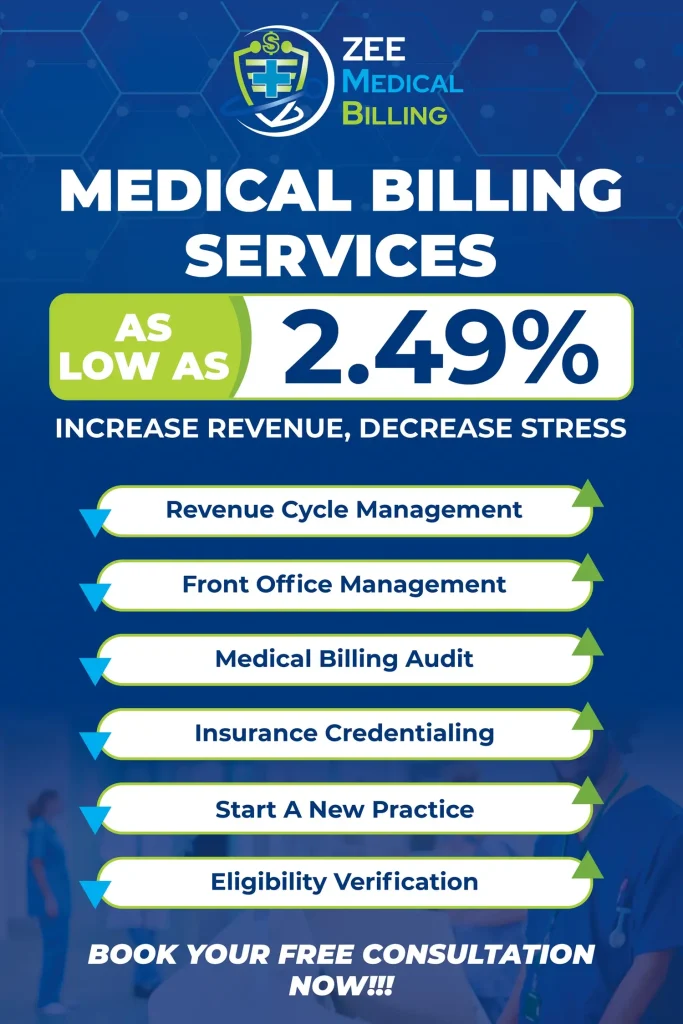Modifier 26 is a key tool in CPT medical coding. People use it to show the professional part of a service. In many medical procedures, particularly in radiology and cardiology, the work is divided into two parts. These are the technical component and the professional component.
Healthcare providers use Modifier 26 when they are responsible only for the professional component of a service. Understanding when and how to use this modifier is essential for accurate billing and proper reimbursement.
What Is Modifier 26?
Modifier 26 indicates that the healthcare provider is billing for only the professional component of a procedure, excluding the technical component. This typically includes:
- Reading and interpreting the results
- Writing the diagnostic report
This is in contrast to the technical component, which includes:
- Equipment usage
- Supplies and facility overhead
- Technician time
Modifier 26 Definition
Modifier 26 is officially defined as: “Professional Component.” It is added to a procedure code when a diagnostic service is interpreted and reported. This happens when the provider does not own the equipment or facility used for the test.
Read More: What Is Modifier 91 and When to Use It in Medical Billing?
When to Use Modifier 26 in Medical Billing?
You should use modifier 26 when:
- The provider performed only the interpretation and report, not the actual procedure.
- The provider performed the diagnostic test in a facility they do not own, such as a hospital or imaging centre.
- A need exists to distinguish between the technical and professional components for proper billing.
Standard CPT codes that often use Modifier 26 include:
- 93010 (Electrocardiogram interpretation)
- 71045–71048 (Chest X-rays)
- 70551–70553 (MRI procedures)
Key Comparison: Modifier 26 vs. Modifier TC
| Aspect | Modifier 26 (Professional Component) | Modifier TC (Technical Component) |
| Purpose | Interpretation & report only | Equipment, technician, and overhead |
| Who uses it | Physician or specialist | Radiology centre provides an MRI scan |
| Example use case | Imaging centre or facility | Radiology centre provides an MRI scan |
| Billing focus | Cognitive and diagnostic services | Physical performance of the procedure |
Standard Procedure Example: 93010 CPT Description
The CPT code 93010 is for a routine electrocardiogram (ECG or EKG). It includes at least 12 leads, as well as the interpretation and report. When billing 93010, the provider said they only interpreted the EKG. They did not give the test or provide the equipment. This is a perfect use case for Modifier 26.
Why Modifier 26 Matters?
Accurately applying modifier 26 ensures:
- Proper allocation of reimbursement between providers and facilities
- Avoidance of claim denials or audits
- Transparency in billing and documentation
Failing to add the correct modifier can result in payment delays or rejections. This is especially true when many parties are involved in a procedure.
Modifier 26 and Medical Specialities
Modifier 26 is commonly used in these specialities:
- Radiology: Reading CT scans, MRIs, X-rays
- Cardiology: Interpreting EKGs and stress tests
- Pathology: Reviewing lab slides
- Neurology: Reading EEG results
Each speciality can use the same CPT code. However, they may bill separately for the technical and professional parts, depending on the setting.
CPT Modifiers List: Where Modifier 26 Fits
CPT modifiers are two-digit codes appended to the main CPT code to provide additional information. They fall into categories such as:
- Pricing modifiers (like Modifier 26)
- Multiple procedure modifiers
- Anatomical modifiers
Modifier 26 is a pricing modifier because it affects the reimbursement of the service.
Read More: What Is Modifier 59 and When to Use It in Medical Billing?
Tips for Accurate Use of Modifier 26
- Use it only when the provider does not provide the equipment.
- Avoid using Modifier 26 if billing for global service (both technical and professional parts).
- Pair with appropriate codes, such as 93010, not bundled codes.
- Always support your claims with documentation, including the report and its interpretation.
Real-World Use Case: Imaging Centre and Cardiologist
Imagine a patient has a chest X-ray at a hospital. The hospital owns the X-ray machine and employs the technician who operates it. However, a radiologist who is not part of the hospital staff performs the interpretation. In this case:
- Hospital bills using the CPT code with Modifier TC.
- The radiologist bills the same CPT code with Modifier 26.
This split ensures both parties are compensated fairly.
Frequently Asked Questions
1. What does Modifier 26 mean in medical billing?
Modifier 26 in medical billing signifies that the provider is billing only for the professional component of a service. This means the provider performed the interpretation and wrote the report. However, they did not provide the equipment or perform the test. Providers commonly use it in diagnostics, where they split services.
2. How is Modifier 26 different from Modifier TC?
Modifier 26 encompasses the professional aspects, including interpretation and report writing. Modifier TC is for the technical part, such as equipment use and technician work. People use them to split the billing of a service when multiple parties are involved.
3. Can Modifier 26 be used with all CPT codes?
No, you should only use Modifier 26 for procedures that have both technical and professional components. This includes procedures such as diagnostic imaging and lab interpretations. Not appropriate for procedures that are entirely professional or entirely technical.
4. Do you always need to use Modifier 26 when interpreting a test?
Not always. Modifier 26 is needed only when the service is split. This is when the provider bills only for their professional role. If the provider owns the equipment and performs the full service, they should bill the global code without a modifier.
5. Why do insurance companies deny claims when Modifier 26 is missing?
Insurance companies can deny claims if Modifier 26 is not used when necessary. This modifier helps distinguish between the professional and technical aspects. Without this clarification, the payer might think that the whole service was provided. This could cause duplicate billing or incorrect reimbursements.
Conclusion
Modifier 26 plays a vital role in clarifying billing responsibilities between healthcare professionals and facilities. By showing that a provider charges only for the professional part, it ensures reimbursements are accurate. This helps make sure they are fair.
This modifier plays a crucial role in fields such as radiology, cardiology, and pathology, where different entities often divide diagnostic services. Knowing how and when to use Modifier 26 can significantly reduce claim denials and improve billing transparency.
For more helpful guides on CPT coding and medical billing best practices, visit the Blog
Need Expert Medical Billing Services?
Zee Medical Billing offers professional billing solutions tailored to healthcare providers nationwide. In addition to providing top-tier support from our main office, we proudly serve clients in 19 states: Illinois, Indiana, California, Kentucky, New York, Washington, Georgia, Alabama, South Carolina, Texas, Pennsylvania, Ohio, New Hampshire, Nevada, Massachusetts, Hawaii, Arizona, and Colorado. Whether you’re looking to streamline your revenue cycle or improve claims accuracy, you can reach out to us to learn more about how we can support your practice.


























